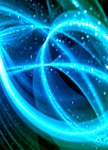版权所有:内蒙古大学图书馆 技术提供:维普资讯• 智图
内蒙古自治区呼和浩特市赛罕区大学西街235号 邮编: 010021

作者机构:Naturwissenschaftlich-Technische Fakultät Universität Siegen Walter-Flex-Strasse 3 D-57068 Siegen Germany Faculty of Physics Astronomy and Applied Computer Science Jagiellonian University ul. Łojasiewicza 11 30-348 Kraków Poland Center for Theoretical Physics Polish Academy of Sciences al. Lotników 32/46 02-668 Warszawa Poland
出 版 物:《Physical Review A》 (Phys. Rev. A)
年 卷 期:2021年第104卷第4期
页 面:042420-042420页
核心收录:
基 金:Deutsche Forschungsgemeinschaft Chinesisch-Deutsche Zentrum für Wissenschaftsförderung European Research Council Narodowe Centrum Nauki Fundacja na rzecz Nauki Polskiej House of Young Talents Siegen Horizon 2020 Framework Programme, H2020, (683107) European Research Council, ERC Deutsche Forschungsgemeinschaft, DFG, (440958198, 447948357) Fundacja na rzecz Nauki Polskiej, FNP Narodowe Centrum Nauki, NCN, (2019/35/O/ST2/01049, DEC-2015/18/A/ST2/00274) Chinesisch-Deutsche Zentrum für Wissenschaftsförderung, CDZ, (M-0294)
主 题:Entanglement detection Quantum correlations in quantum information Quantum entanglement
摘 要:We investigate the joint (separable) numerical range of multiple measurements, i.e., the regions of expectation values accessible with (separable) quantum states for given observables. This not only enables efficient entanglement detection, but also sheds light on the geometry of the set of quantum states. More precisely, in an experiment, if the confidence region for the obtained data and the separable numerical range are disjoint, entanglement is reliably detected. Generically, the success of such an experiment is more likely the smaller the separable numerical range is, compared to the standard numerical range of the observables measured. We quantify this relation using the ratio between these two volumes and show that it cannot be arbitrarily small, giving analytical bounds for any number of particles, local dimensions, as well as number of measurements. Moreover, we explicitly compute the volume of separable and standard numerical range for two locally traceless two-qubit product observables, which are of particular interest as they are easier to measure in practice. Furthermore, we consider typical volume ratios for generic observables and extreme instances.